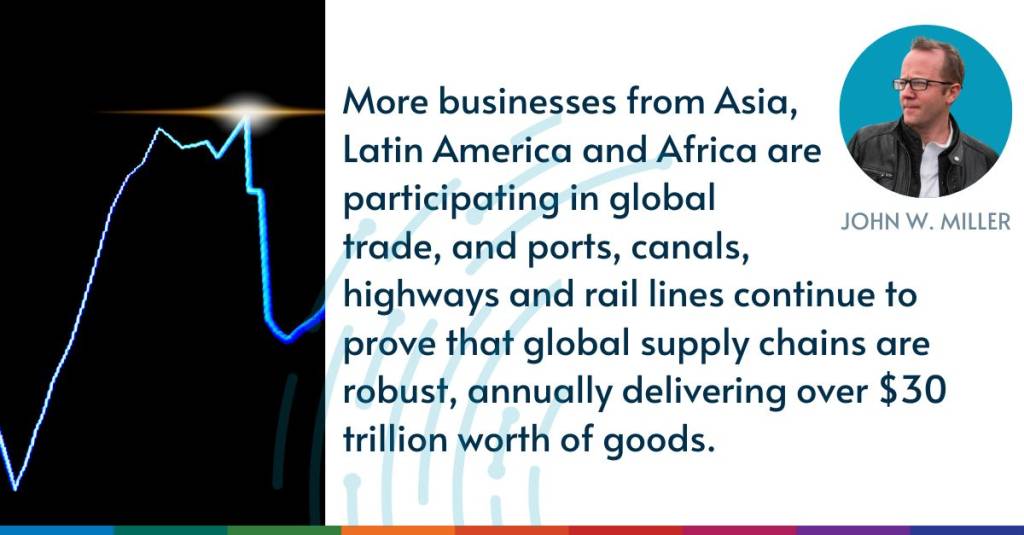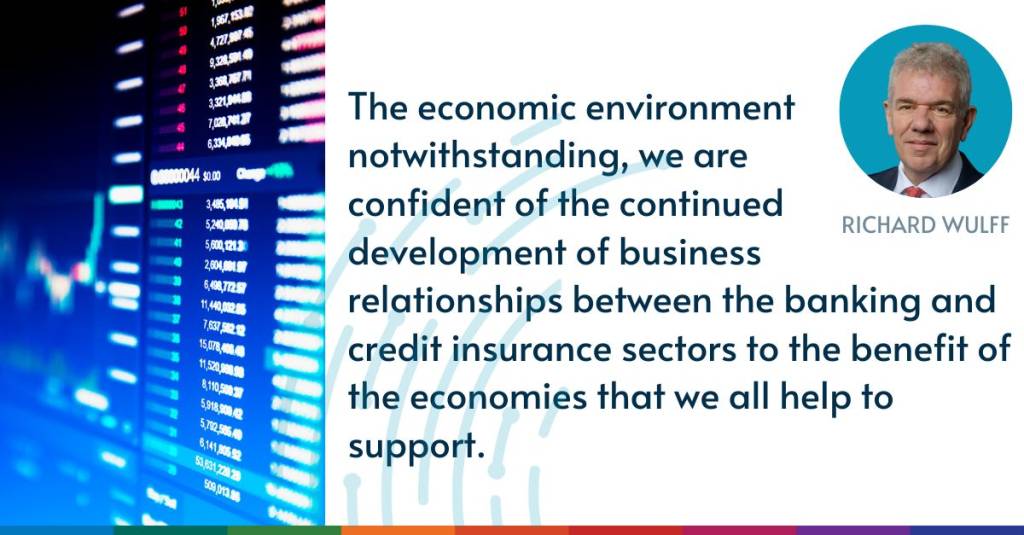Estimated reading time: 6 minutes
It seemed like just yesterday that TFG spoke to our industry friends about their predictions for 2023. But in a blink of an eye, we are over half way through the year. As always, the world of international trade is a busy one, filled with twists and turns that are difficult to predict.
But that’s exactly what we asked John W. Miller and Richard Wulff to do in January. They stepped up to the plate and gave their thoughts on what would occur in 2023. The TFG team thought it would be fun to take a step back, look at their predictions, and have the industry leaders do some self-reflection.
As always, TFG wants to thank all of the participants for working with us on the predictions campaign.
TFG’s Brian Canup spoke with:
- John W. Miller, chief economic analyst at Trade Data Monitor,
- Richard Wulff, executive director at ICISA.
See January’s predictions below:
Trade volume, commodity and insurance predictions for 2023
John W. Miller
| What are your predictions for global trade trends in 2023? | What are the positive outlooks for 2023 trade? |
| Energy will dominate the global commodities market. Russian oil and gas is flowing to China, India and Turkey instead of Europe, which is discovering its appetite for US liquid natural gas from Texas and Appalachian fracking wells. | On the bright side, trade in electric vehicles, solar panels, windmills, and batteries and their ingredients is thriving. More businesses from Asia, Latin America and Africa are participating in global trade, and ports, canals, highways and rail lines continue to prove that global supply chains are robust, annually delivering over $30 trillion worth of goods. |
July review
I think the biggest story in global trade in 2023, which we predicted but probably underestimated, is the changing role of China. Chinese exports increased only 0.3% to $1.4 trillion in the first five months of 2023. That’s a massive shift from what’s been happening since China joined the WTO in 2001.
This decrease is due to shifting economic and geopolitical alliances. Manufacturers are diversifying supply chains, relying less on China. And of course, there’s COVID.
And that’s shrinking overall trade.
A recent UN report found that global trade in goods increased by 1.9% in the first quarter of 2023, adding $100 billion over 2022. (We don’t track trade in services but it’s worth noting that that increased 2.8%, adding $50 billion, according to the UN.)
However, there are niche sectors where Chinese exports are soaring. Take autos, which we suggested paying attention to. In the first five months of 2023, Chinese auto exports increased 43% to $77.1 billion. It’s an example of how quickly an industrial sector can change. China is now the world’s second-biggest exporter of car and trucks, behind only Germany.
As it loses markets, China is also importing far fewer commodities, with one biggest exception. It’s become the world’s main importer of food and agriculture. That was not something that was on our radar until this year, but it’s really important. Chinese imports of food and agriculture increased 10% to $89.7 billion in the first five months of 2023.
China, India and Turkey are still buying Russian gas and oil, which we predicted. France and other European countries have stopped increasing energy imports from the US, but are maintaining their purchases.
And we were right about nearshoring, and the boom in trade of electric vehicles, solar panels, windmills and other green energy technology. The US shrank imports from China 26% to $132.7 billion during the first four months of 2023, and hiked those from Mexico 6% to $153.6 billion. Mexico has now overtaken China as the US’s top source of imports.

Richard Wulff
| What will the trade credit insurance environment look like in 2023 for bank and corporate users? | Will 2023 see more insolvencies and defaults than previous years? |
| Mass uncertainty will be reflected in the trade credit insurance business, with more companies looking for options to mitigate risk and support development. There are clear signs that this is leading to a higher demand for our products. | We have seen a continuation of the trend of increased demand for trade credit insurance acquired by financial institutions, for both single names and baskets of risk. The economic environment notwithstanding, we are confident of the continued development of business relationships between the banking and credit insurance sectors to the benefit of the economies that we all help to support. |
July review
You didn’t need to be a Nobel laureate to know that the economic environment heading into 2023 was complicated. Energy prices were the big story during the European winter, but it actually turned out to be milder than expected, which mitigated the effect somewhat.
However, overall the story of 2023 has been one of inflation, the responses of governments, and the impact on the global economy. At the same time, geopolitical tensions have not gone away and have impact trade flows and the business environment overall. This is probably a longer-term effect that may be with us for an extended period.
ICISA members will be keeping a close eye on economic performance in the major blocs and the potential impact of further rate hikes from central banks to address inflation. Having just recently concluded our annual meetings in Brussels, members continue to report demand for trade credit insurance and surety, as well as appetite within the market to place those risks.
When I look at our recently published results from across our membership; premium is up, claims are up, and exposures are up. That is reflective of 2022, but looking at the tea leaves this year and the economic environment, and I believe we are seeing a continuation of that.
The business environment, as I said earlier, is challenging. There have been a few prominent insolvencies in different markets, and as inflation continues to bite, we are likely to see more. We also have to remember that with the pandemic and the resulting state support, we have been through some two of the most bizarre years when it comes to insolvencies and defaults with numbers way down.
So we are also seeing a natural normalisation in markets, which includes an increase in default and insolvencies. But this is also happening in line with the economic circumstances, which means these are higher than in normal years. Again, this is broadly in line with expectations.

























